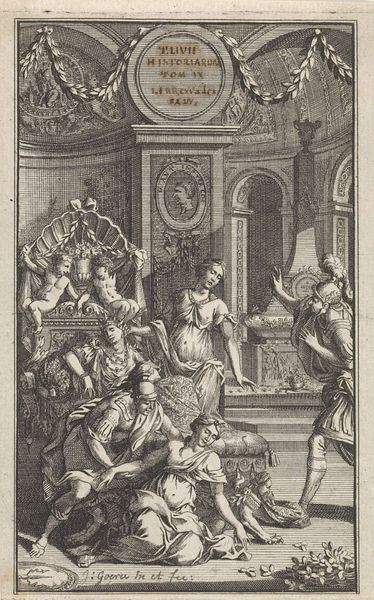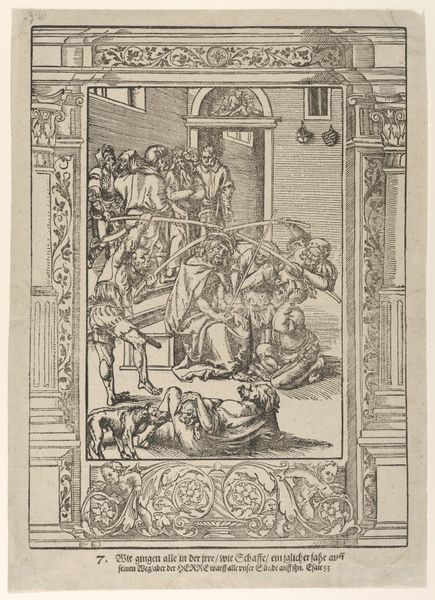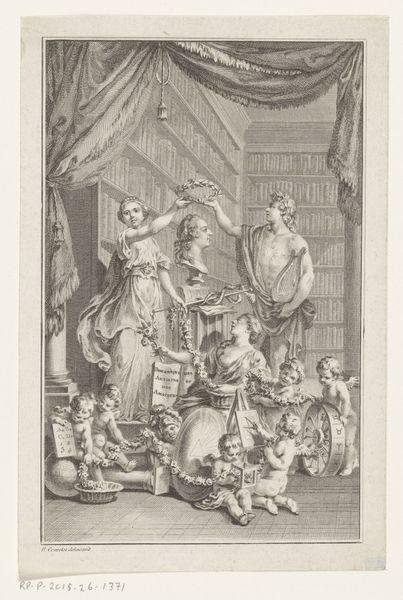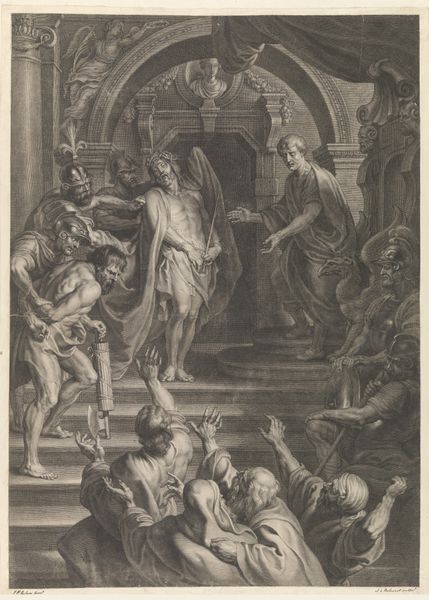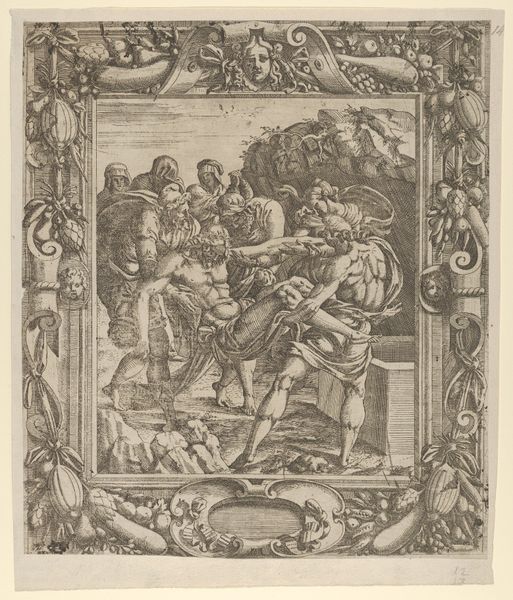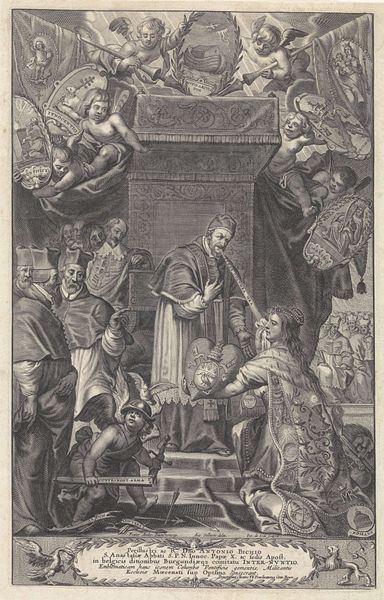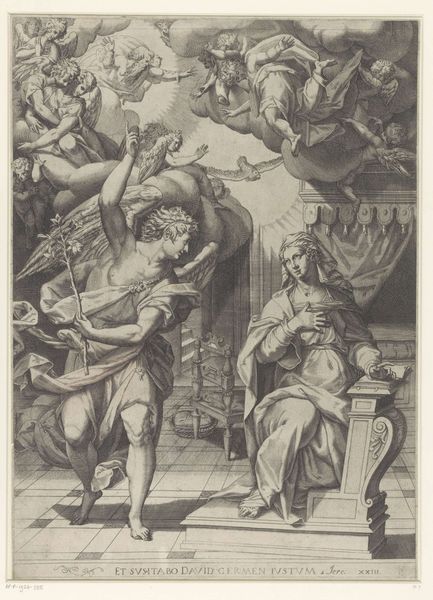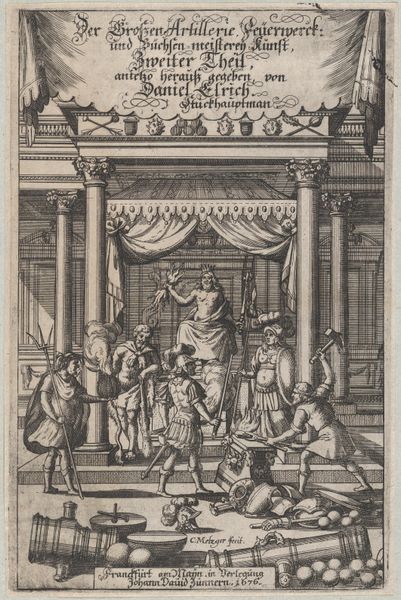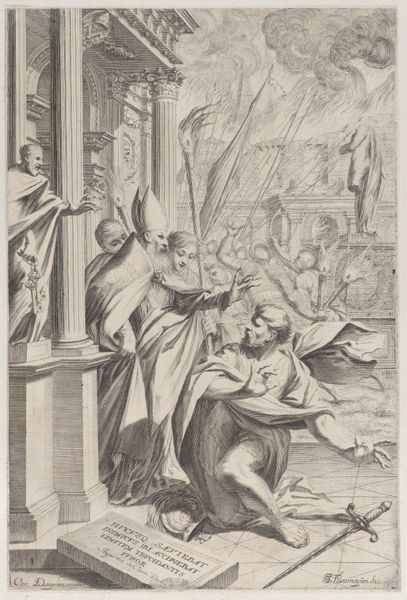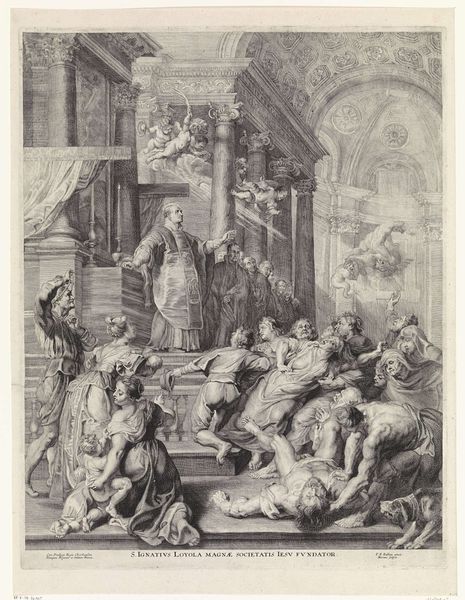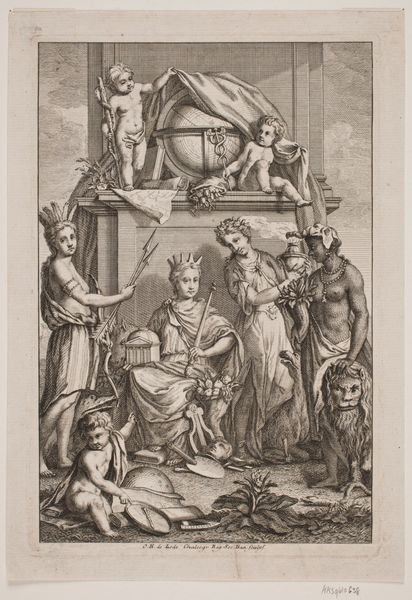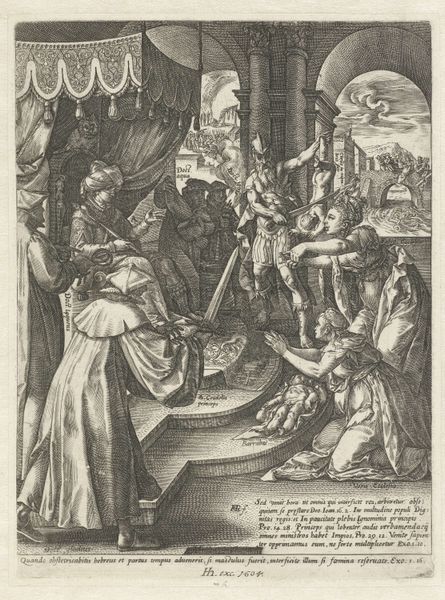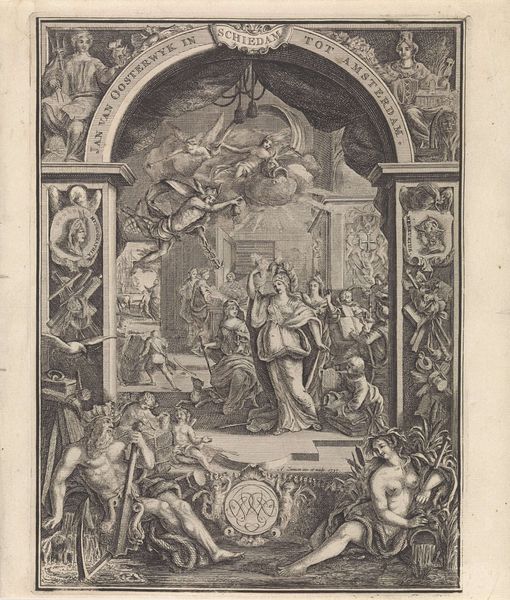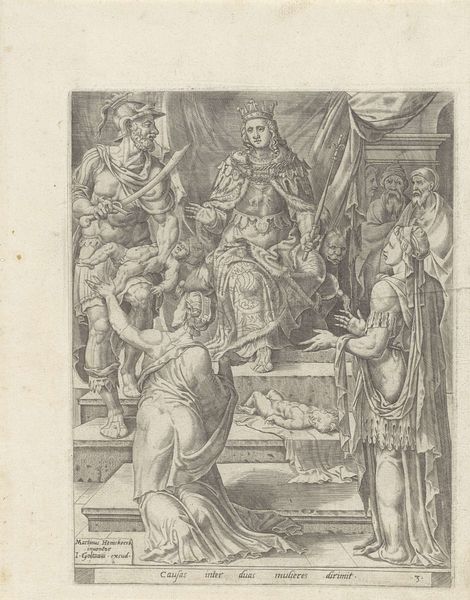
Allegorial Composition with Figures Working According to an Architectural Plan 1620 - 1650
0:00
0:00
drawing, print, etching, engraving
#
drawing
#
allegory
#
baroque
# print
#
etching
#
figuration
#
men
#
history-painting
#
engraving
Dimensions: Sheet: 13 3/8 in. (34 cm) Plate: 13 1/8 × 8 13/16 in. (33.3 × 22.4 cm)
Copyright: Public Domain
Editor: Here we have Grégoire Huret's "Allegorical Composition with Figures Working According to an Architectural Plan," dating from sometime between 1620 and 1650. It's a print made with etching and engraving. I find the chaos of figures at the bottom really clashes with the formality of the architectural elements. It almost feels… violent. What stands out to you when you look at this work? Curator: Violent, yes! But controlled, wouldn't you agree? Like a precisely choreographed dance of destruction and construction. I see the swirling energy of the Baroque, that delicious tension between order and exuberance. Consider the inscription 'Palatium Regiae Eloquentiae' - The Palace of Royal Eloquence. Editor: Royal eloquence... so, words, rhetoric? I'm still caught on the violence depicted down below, the figures in turmoil. How does that connect to eloquence? Curator: Perhaps it's the cost of eloquence. The raw emotion, the struggle for truth, literally being hammered into shape! Or, dare I suggest, the old being demolished to make way for the new – like ripping down an old building for a modern skyscraper! A bit dramatic, maybe. What do you think? Editor: That’s a fascinating take. The violence isn't just chaos, but a necessary part of building something new. A sort of…eloquent demolition! Curator: Precisely! The destruction being as critical to the final outcome as the design and planning. Something else catches my eye. Notice how some figures appear illuminated while others are veiled in shadow. It hints at secrets held, and enlightenment struggling to break through the dark. Huret doesn’t give us easy answers. He provokes questions, doesn't he? Editor: He really does. I definitely see this in a completely different light now – less chaotic, more purposefully destructive. It has definitely given me much to consider about eloquence. Curator: That’s the joy of Baroque, isn’t it? The chance to lose ourselves in thought as the etching begs further interpretation. And, by virtue of having seen a work through one set of eyes, others have begun to see with fresh vision!
Comments
No comments
Be the first to comment and join the conversation on the ultimate creative platform.
